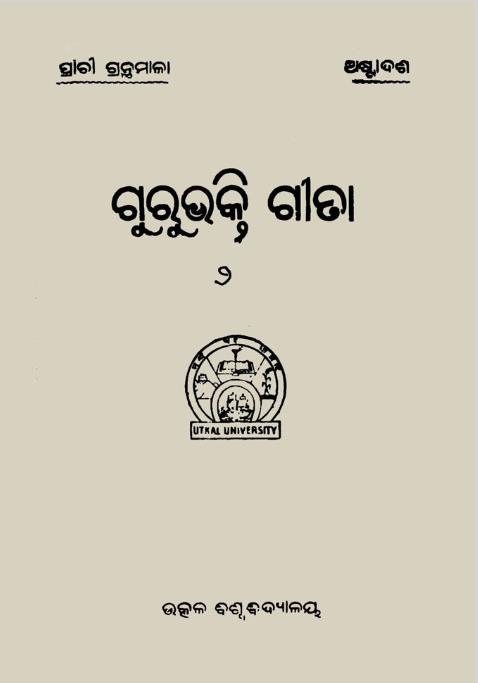In the realm of Odia literature and philosophy, Guru Bhakti Gita, v.02 occupies a significant place. Authored by the revered Achyutananda Das and edited by Arta Ballabha Mohanty, this profound work was first published in 1930 by Prachi and later reissued in 1970. It serves as a testament to the rich spiritual heritage of Odisha, intertwining philosophical discourse with devotional fervor.
At its core, Guru Bhakti Gita explores the deep-seated theme of devotion to the Guru or spiritual teacher. The very title reflects a dichotomy of thoughts—while Gita refers to sacred teachings akin to the “Bhagavad Gita, Guru Bhakti emphasizes devotion. Achyutananda Das elucidates the pivotal role a Guru plays in guiding the seeker towards self-realization and divine knowledge. The book’s verses reveal a nuanced understanding of the Guru-Disciple relationship, urging readers to recognize the importance of surrender and trust in spiritual growth.
The text draws on various philosophical traditions, blending elements of Vedanta, Tantra, and Gaudiya Vaishnavism. Achyutananda Das’s unique perspective is showcased through his poetic verse, which encapsulates profound spiritual truths in accessible language, making it relatable for both scholars and lay readers alike.
The Guru Bhakti Gita is structured as an expansive poetic dialogue, where the divine wisdom is imparted through poetic lyricism. The verses have a rhythmic cadence, making them not only intellectually stimulating but also a joy to recite. Each stanza presents insights about devotion, the nature of reality, and the significance of selfless service, reflecting an ethos that resonates with seekers of truth.
Achyutananda Das’s eloquence is further exemplified in his use of metaphor and allegory. He weaves together concepts that help to elucidate the often intricate ideas surrounding spirituality, making them accessible to a wider audience. This stylistic flair is a hallmark of his literary prowess and has solidified his position in the Odia literary canon.
Published during a time when India was grappling with colonial influences, Guru Bhakti Gita also serves as a spiritual resistance and a reaffirmation of indigenous cultural values. The poignant messages within the text encourage readers to seek solace and strength in their spiritual traditions amidst external turmoil. The revival of interest in Guru worship and traditional texts during this era aligns with a broader cultural renaissance, allowing these ancient truths to permeate contemporary consciousness.
Guru Bhakti Gita, v.02 has left an indelible mark on Odia spirituality and culture. It continues to inspire practitioners and scholars alike, nurturing a sense of inquiry into the essence of divinity and the path of devotion. The teachings of Achyutananda Das resonate even today, urging individuals to foster a deep relationship with their spiritual guides while navigating their own inner landscapes.
In summary, Guru Bhakti Gita stands as a monumental work, reflecting the profound philosophical insights and deep devotional sentiments that characterize Odia literature. It invites readers to embark on a journey of self-discovery, anchored in the transformative power of Guru Bhakti.
Books Info
| Books name | Guru Bhakti Gita / ଗୁରୁଭକ୍ତି ଗୀତା |
| Author | Achyutananda Das; Arta Ballabha Mohanty, Ed. |
| No Of pages | 102 |
| Publisher | Utkal Biswabidyalaya |
| Publication | 1930 (Prachi), 1970 |
| Printed At | NA |
| Distributor | NA |

